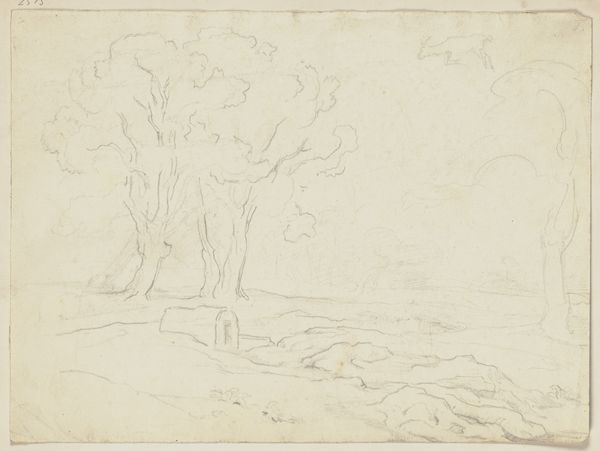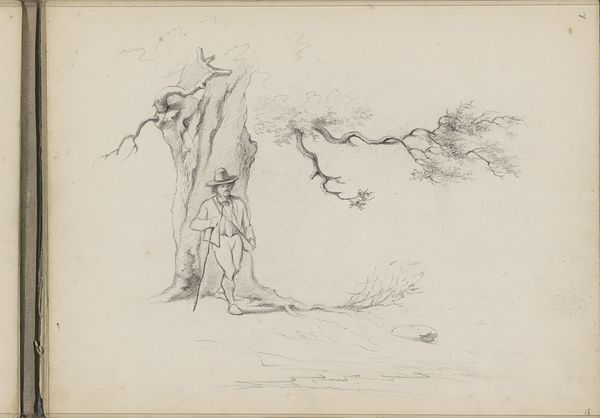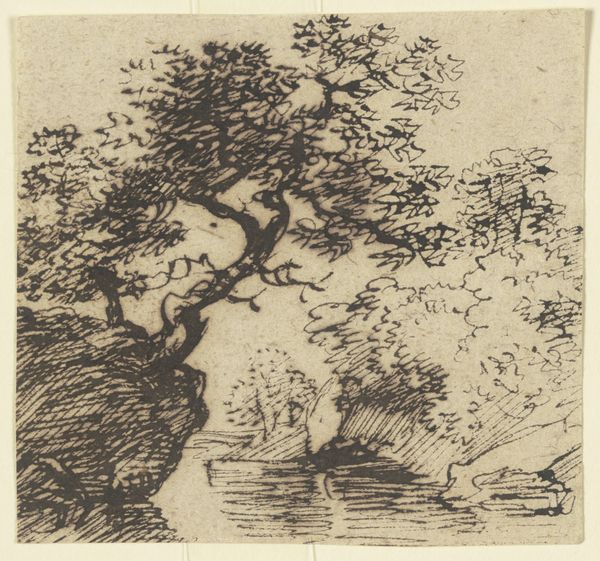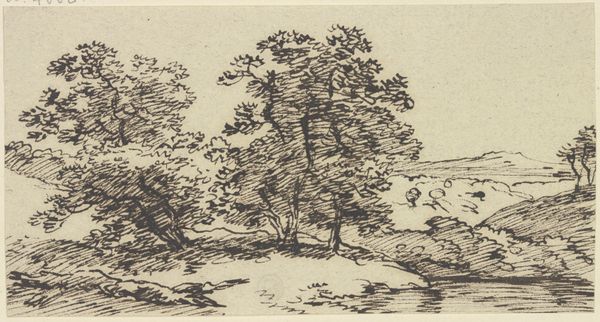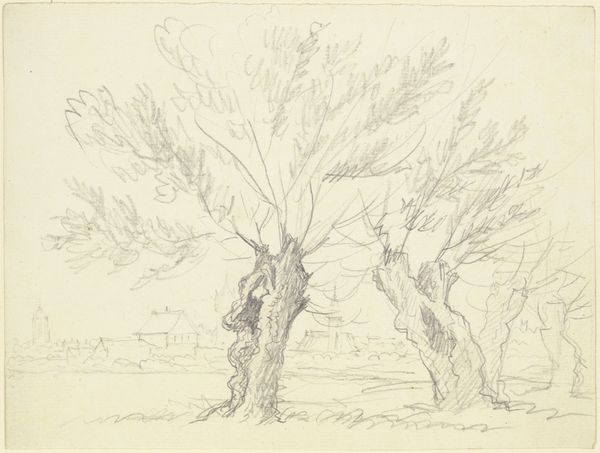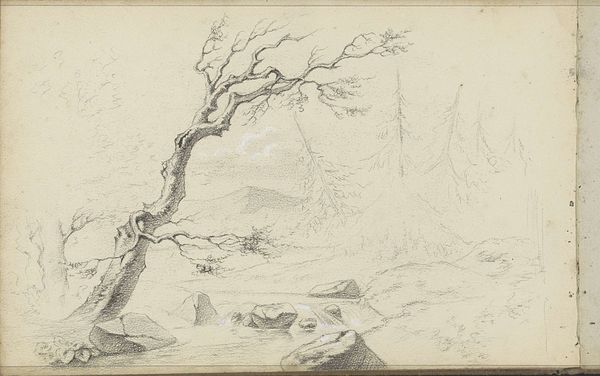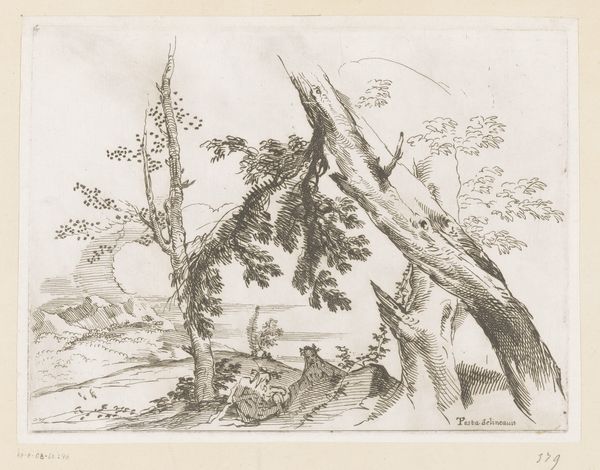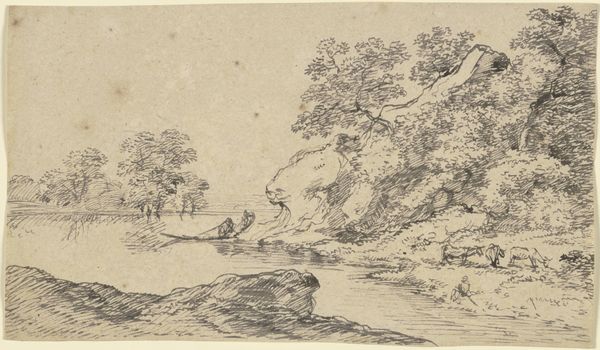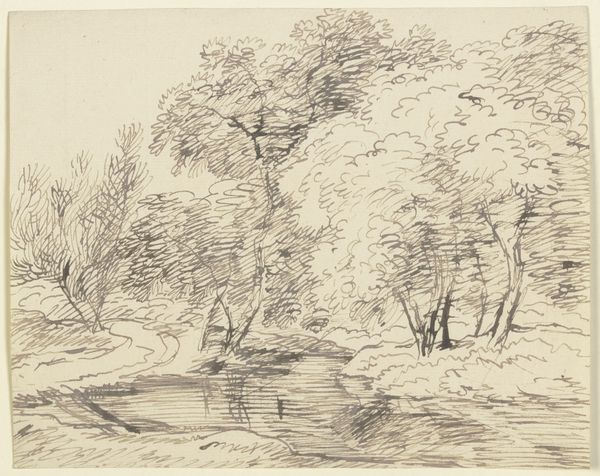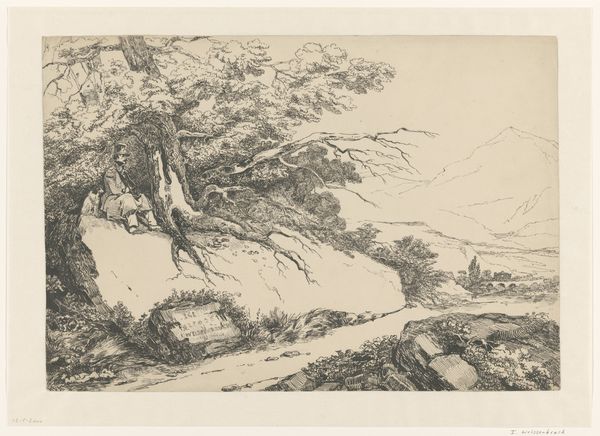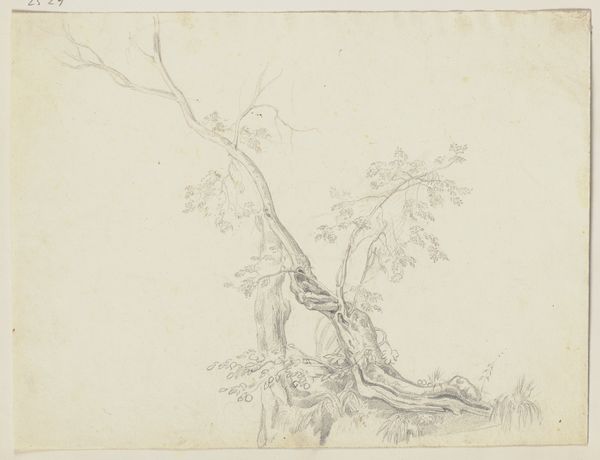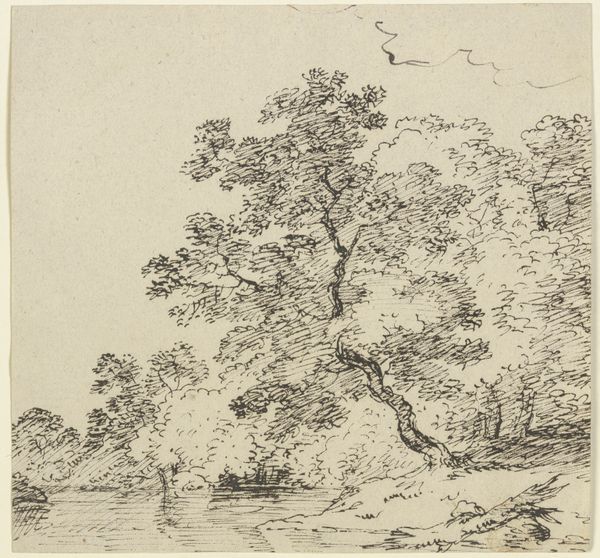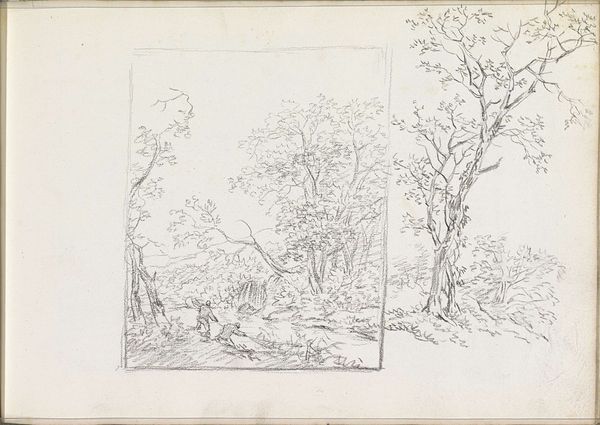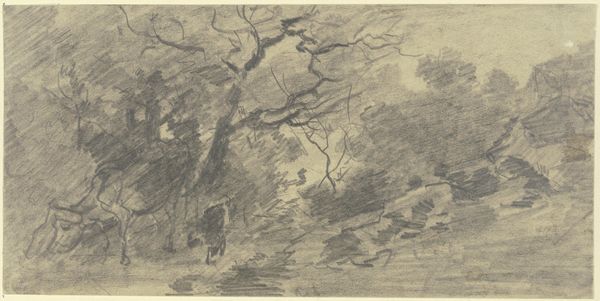
drawing, graphite
#
drawing
#
landscape
#
personal sketchbook
#
15_18th-century
#
graphite
Copyright: Public Domain
Curator: Before us is "Willows at a stream," a graphite drawing currently residing here at the Städel Museum. The work is attributed to Friedrich Wilhelm Hirt, and though undated, it is thought to come from the late 18th century. Editor: You know, looking at it, I feel like I've stumbled onto the page of someone's private sketchbook. There’s such a raw, unfiltered energy to the lines—almost like a secret whispered onto paper. Curator: Absolutely. There is an element of intimacy that cannot be denied, and one may begin by considering the social conventions that make that possible, like how sketches, as a mode of creation, freed the artist to investigate— to contemplate. It speaks to the function of drawing in the 18th century, before photography made it easier to "capture" an image. Editor: I see that. The way the willows are bending just so and the light hitting the water—it's a place I swear I've been to in a dream. But tell me more about that 'function,' what's the difference? Curator: The practice of sketching allowed the artist to engage in a sort of dialogue with the landscape, a back-and-forth of perception and expression, one less available through other artistic processes. We must recognize sketching's place as not merely secondary to “finished” paintings, but a practice of developing intimacy with the landscapes themselves, especially at a time where our connection to natural habitats and resources was being threatened by rapid industrial expansion. The very act of putting graphite to paper—a deliberate, corporeal action—reaffirms a crucial role in defining cultural and geographical belonging. Editor: That tension—between nature and this urge to tame it—I think I get it. Because, to be honest, I’m kind of jealous of Hirt, or any artist with the ability to bottle up a whole world, a feeling, like this with some quick strokes and shading. Like right there. That gnarled old willow by the stream must have stood there for generations, silent witness to all that tension. Curator: And those observations raise larger points about how gender and the land interact within patriarchal societies and colonial narratives. You touch on very rich associations about the feminine archetype of the earth, to be known and accessed by an inherently male and domineering subject… Editor: Hmm... well, putting the weight of gender politics aside, can we agree the drawing captures that specific time of day when the light’s about to disappear? A melancholic in-between. Curator: I suppose there is something intrinsically elegiac about witnessing our natural resources and topographies continually altered. The impermanence is definitely communicated and perhaps all the more palpable. Editor: It does make me think, how will we ever sketch what's lost? Thanks, that helped me connect. Curator: Agreed; let us keep striving to establish inclusive critical engagement with the pieces that are left.
Comments
No comments
Be the first to comment and join the conversation on the ultimate creative platform.
